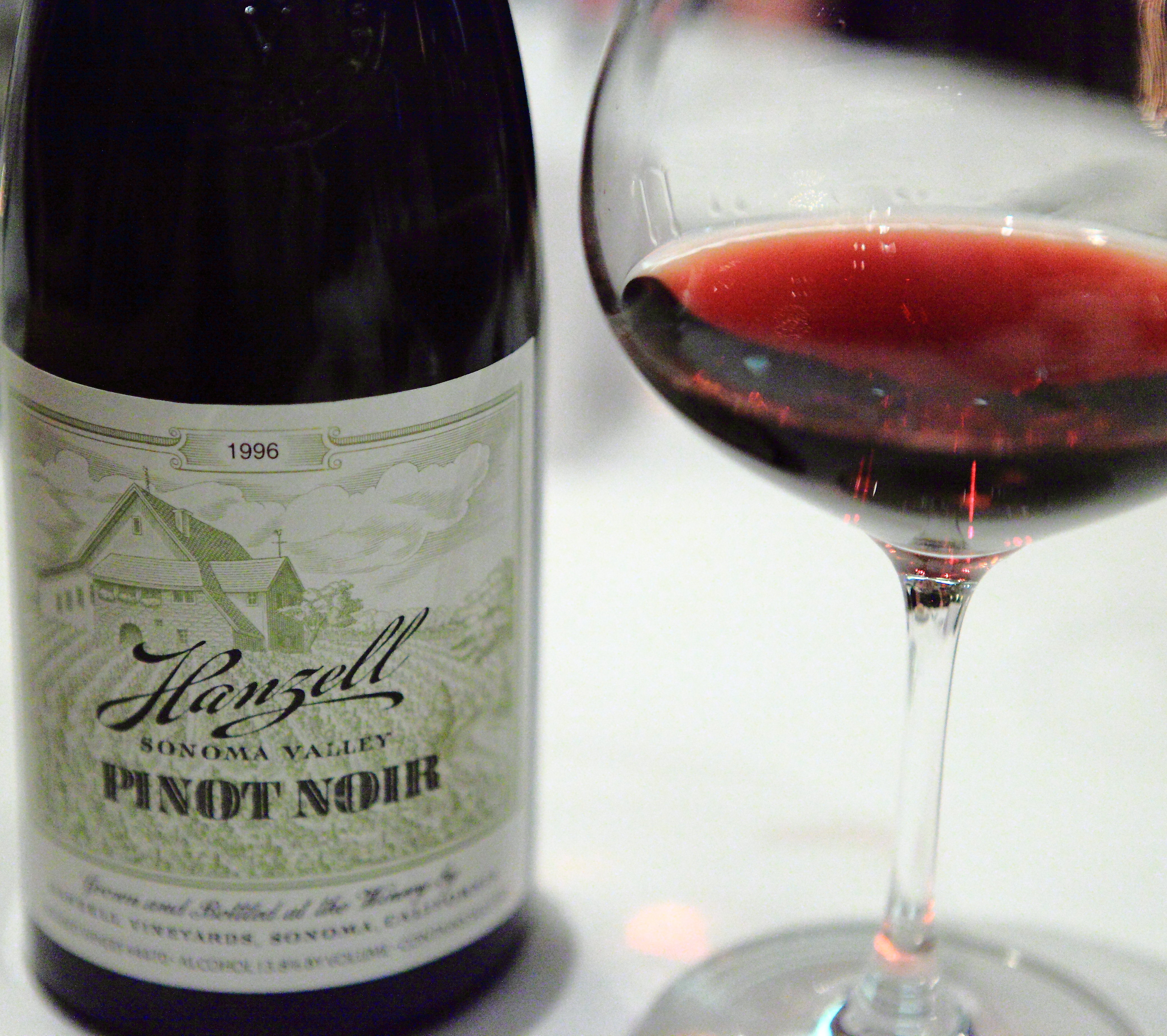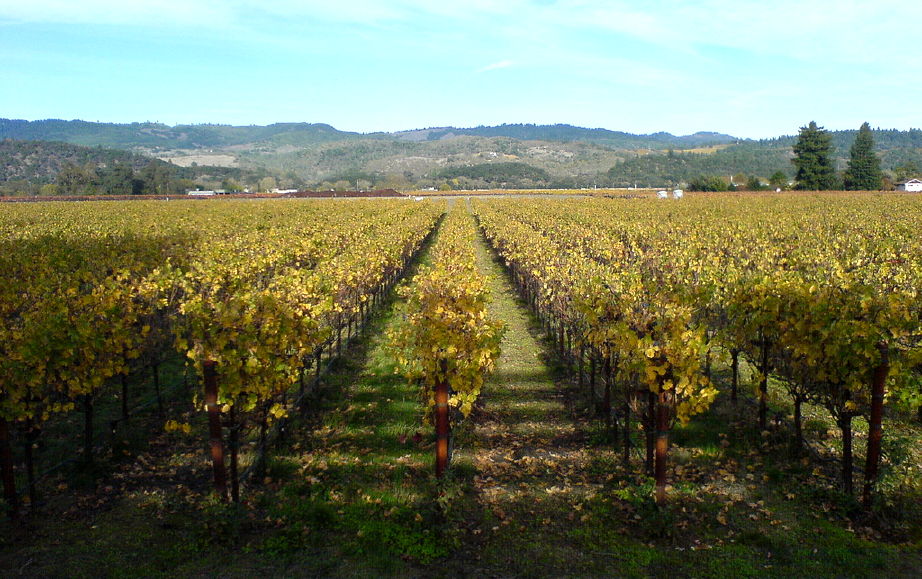|
Hanzell Vineyards
Hanzell Vineyards is a California wine producer located just outside the town of Sonoma (wine), Sonoma. The winery was founded by James David Zellerbach (future United States Ambassador to Italy) who acquired 200 acres in the Mayacamas Mountains in 1943 and began planting Pinot noir, Pinot Noir and Chardonnay in 1953. At the time, the entire state of California had fewer than 200 acres planted to Chardonnay.Hanzell Vineyards 'History of Hanzell Vineyards"''. Accessed: March 20th, 2011 Hanzel would go on to pioneer in the California several winemaking techniques that would become associated with the style of California Chardonnay including the use of Oak (wine), barrel-aging, malolactic fermentation, and the use of inert gases and :wikt:anaerobic, anaerobic winemaking. Hanzell was also among the first vineyards to plant the Wente Clone of Chardonnay. History The first plantings of Hanzell took place in 1953, when Zellerbach planted two acres of Pinot noir and four acres of Chardonnay ... [...More Info...] [...Related Items...] OR: [Wikipedia] [Google] [Baidu] |
California Wine
California wine production has a rich viticulture history since 1680 when Spanish Jesuit missionaries planted ''Vitis vinifera'' vines native to the Mediterranean region in their established missions to produce wine for religious services. In the 1770s, Spanish missionaries continued the practice under the direction of the Father Junípero Serra who planted California's first vineyard at Mission San Juan Capistrano. Its contemporary wine production grew steadily since the end of Prohibition, but mostly known for its sweet, port-style and jug wine products. As the market favored French brands, California's table wine business grew modestly, Taber (2005), p40 but quickly gained international prominence at the Paris Wine Tasting of 1976, when renowned French oenophiles, in a blind tasting, ranked the California wines higher than the premier French labels in the Chardonnay (white) and Cabernet Sauvignon (red) categories. Taber (2005), pp216–220 The result caused a ... [...More Info...] [...Related Items...] OR: [Wikipedia] [Google] [Baidu] |
New World (wine)
New World wines are those wines produced outside the traditional winegrowing areas of Europe and the Middle East, in particular from Argentina, Australia, Brazil, Canada, Chile, Japan (primarily Tokachi), Mexico, New Zealand, South Africa and the United States (primarily California). The phrase connotes a distinction between these "New World" wines and those wines produced in " Old World" countries with a long-established history of wine production, essentially in Europe and the Middle East, most notably: France, Italy, Spain, Portugal, Germany, Romania, Georgia, and Switzerland. Both the quantity and quality of New World wine production have increased greatly since about 1970. Outside their home markets, New World wines can be said to have been very successful in exports to non-wine producing countries, above all the United Kingdom, and also to North America. But they have achieved relatively little penetration in old wine-making countries such as France and Italy. History Ear ... [...More Info...] [...Related Items...] OR: [Wikipedia] [Google] [Baidu] |
Wineries In Sonoma County, California
A winery is a building or property that produces wine, or a business involved in the cultivation and production of wine, such as a wine company. Some wine companies own many wineries. Besides wine making equipment, larger wineries may also feature warehouses, bottling lines, laboratories, and large expanses of tanks known as tank farms. Wineries may have existed as long as 8,000 years ago. Ancient history The earliest known evidence of winemaking at a relatively large scale, if not evidence of actual wineries, has been found in the Middle East. In 2011 a team of archaeologists discovered a 6000 year old wine press in a cave in the Areni region of Armenia, and identified the site as a small winery. Previously, in the northern Zagros Mountains in Iran, jars over 7000 years old were discovered to contain tartaric acid crystals (a chemical marker of wine), providing evidence of winemaking in that region. Archaeological excavations in the southern Georgian region of Kvemo Kartli unc ... [...More Info...] [...Related Items...] OR: [Wikipedia] [Google] [Baidu] |
Bob Sessions (winemaker)
Bob Sessions (December 11, 1931 – May 13, 2014) was an American winemaker. He was winemaker for Hanzell Vineyards for 28 years. Early life Robert Sessions was born in Glendale, California, in 1931. He attended the University of California, Berkeley. He earned a degree in English literature in 1957. After graduation, he traveled to France and Brussels. His trip to Europe started his interest in wine. Sessions would marry Mary J. Cross, known as Molly, on December 19, 1959.Ancestry.com. California, Marriage Index, 1949-1959 atabase on-line Provo, UT, USA: Ancestry.com Operations, Inc., 2013. Life in wine Sessions was a self-taught winemaker. From 1964 until 1971, he worked at Mayacamas Vineyards. Next, he worked at Souverain as production manager. He also worked at Stags Leap Wine Cellars, which he helped open. While at Stags Leap, he helped Warren Winiarski create and bottle the 1973 Cabernet Sauvignon that was blind tasted in the Judgement of Paris. Hanzell Vineyards Sess ... [...More Info...] [...Related Items...] OR: [Wikipedia] [Google] [Baidu] |
Heitz Wine Cellars
Heitz Cellar is a California wine producer located within Napa Valley east of the town of St. Helena. An early modern era Napa Valley presence and pioneering exponent of French oak, the estate enjoys a historical renown with the success of its Martha's Vineyard Cabernet Sauvignon, and has also been described as a "master of Grignolino". History The estate was established in 1961 by Joseph (Joe) and Alice Heitz, during a period when the population of Napa Valley wineries had been reduced to the lowest number since the Prohibition, with about two dozen wineries, at what is recognized as the turning point of Napa's wine industry. Joe Heitz Born in Princeton, Illinois, Heitz grew up on a farm and came to California in the 1940s while serving in the Army Air Corps. For most of World War II, he served as a mechanic at an Air Corps base near Fresno. At night and on weekends, he worked various odd jobs which led to work at an Italian Swiss Colony winery setting him on his career pa ... [...More Info...] [...Related Items...] OR: [Wikipedia] [Google] [Baidu] |
Brewer Clifton
Brewing is the production of beer by steeping a starch source (commonly cereal grains, the most popular of which is barley) in water and fermenting the resulting sweet liquid with yeast. It may be done in a brewery by a commercial brewer, at home by a homebrewer, or communally. Brewing has taken place since around the 6th millennium BC, and archaeological evidence suggests that emerging civilizations, including ancient Egypt, China, and Mesopotamia, brewed beer. Since the nineteenth century the brewing industry has been part of most western economies. The basic ingredients of beer are water and a fermentable starch source such as malted barley. Most beer is fermented with a brewer's yeast and flavoured with hops. Less widely used starch sources include millet, sorghum and cassava. Secondary sources (adjuncts), such as maize (corn), rice, or sugar, may also be used, sometimes to reduce cost, or to add a feature, such as adding wheat to aid in retaining the foamy head of the ... [...More Info...] [...Related Items...] OR: [Wikipedia] [Google] [Baidu] |
Chalone (AVA)
Chalone identifies the first American Viticultural Area (AVA) established in Monterey County, California, straddling its border with San Benito County where it is the second established AVA. Chalone viticultural area is located in the Gabilan Mountains east of Soledad. It was recognized by the Bureau of Alcohol, Tobacco and Firearms (ATF) effective on July 14, 1982, after reviewing the petition submitted by the Gavilan Vineyards, Inc. to establish a viticultural area in Monterey and San Benito counties to be named "The Pinnacles". The area encompasses and the proposed name was recognition of the nearby Chalone peaks. Naming Based upon testimony presented at a public hearing and submitted written comments, ATF concluded the proposed name, "The Pinnacles", was inappropriate to designate the proposed viticultural area. This determination was arrived at because of trademark claims by another winery and the possibility of consumer confusion that would result if the proposed ... [...More Info...] [...Related Items...] OR: [Wikipedia] [Google] [Baidu] |
Mount Eden Vineyards
Mount is often used as part of the name of specific mountains, e.g. Mount Everest. Mount or Mounts may also refer to: Places * Mount, Cornwall, a village in Warleggan parish, England * Mount, Perranzabuloe, a hamlet in Perranzabuloe parish, Cornwall, England People * Mount (surname) * William L. Mounts (1862–1929), American lawyer and politician Computing and software * Mount (computing), the process of making a file system accessible * Mount (Unix), the utility in Unix-like operating systems which mounts file systems Books * ''Mount!'', a 2016 novel by Jilly Cooper Displays and equipment * Mount, a fixed point for attaching equipment, such as a hardpoint on an airframe * Mounting board, in picture framing * Mount, a hanging scroll for mounting paintings * Mount, to display an item on a heavy backing such as foamcore, e.g.: ** To pin a biological specimen, on a heavy backing in a stretched stable position for ease of dissection or display ** To prepare dead animal ... [...More Info...] [...Related Items...] OR: [Wikipedia] [Google] [Baidu] |






